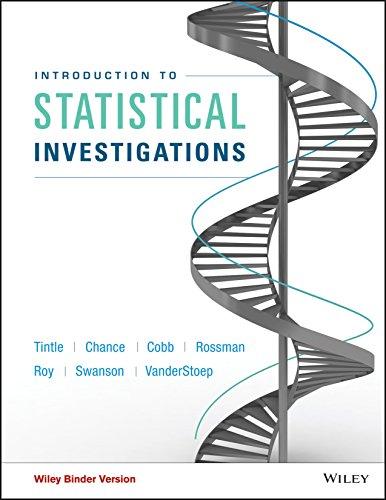An article in a 2006 issue of Journal of Behavioral Decision Making reports on a study involving
Question:
An article in a 2006 issue of Journal of Behavioral Decision Making reports on a study involving 47 undergraduate students in a class at Harvard. All of the participants were given $50, but some (chosen at random) were told that this was a “tuition rebate,” while the others were told that this was “bonus income.” Aft er one week, the students were contacted again and asked how much of the $50 they had spent and how much they had saved. Those in the “rebate” group had spent an average of $22.04, while those in the “bonus” group had spent an average of $9.55.
a. Identify the explanatory and response variables in this study. Also classify each variable as categorical or quantitative.
b. Is this an observational study or an experiment? Explain.
c. Did this study make use of random sampling, random assignment, both, or neither?
d. If the difference in average spending amounts between the two groups is determined to be statistically significant, would it be legitimate to draw a cause-and-effect conclusion between what the money was called and how much was spent? Justify your answer.
e. If the difference in average spending amounts between the two groups is determined to be statistically significant, would it be legitimate to generalize the result of this study to all adult Americans? Justify your answer.
Step by Step Answer:

Introduction To Statistical Investigations
ISBN: 9781118172148
1st Edition
Authors: Beth L.Chance, George W.Cobb, Allan J.Rossman Nathan Tintle, Todd Swanson Soma Roy





